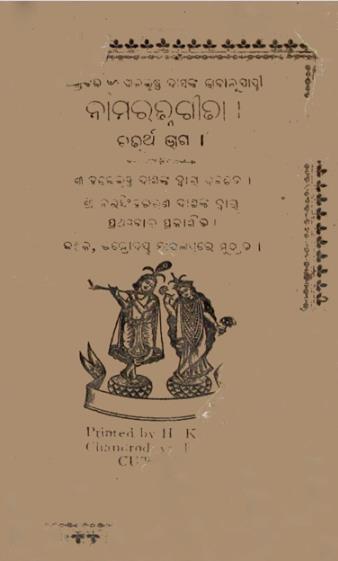In the vast landscape of philosophical literature, certain texts stand out not merely for their content but for their profound exploration of the human condition. One such work is the Namaratna Gita, penned by Dina Krusna Das and first published in 1927. This text invites readers to reflect on the fundamental questions of existence, morality, and the pursuit of truth, all through the lens of Eastern philosophy.
The Namaratna Gita, often described as a sub-philosophical text, integrates various philosophical traditions and presents them in a manner that is accessible yet deeply contemplative. Krusna Das, drawing from the vast reservoir of Indian philosophical thought, particularly the Bhagavad Gita, offers insights that resonate with both ancient wisdom and contemporary issues.
At its core, the Namaratna Gita addresses the quest for self-realization and the significance of ethical living. It examines the interplay between the individual and the universe, urging readers to navigate their personal paths while remaining attuned to broader cosmic truths. Through its verses, Krusna Das emphasizes the importance of understanding one’s role within the intricate tapestry of life. This notion aligns closely with the concept of Dharma in Indian philosophy, which posits that every individual has a unique duty and that fulfillment of this duty is essential for personal and collective harmony.
What sets the Namaratna Gita apart is its stylistic approach. The text is written in a poetic form, filled with metaphors and allegories that enrich its philosophical insights. This poetic nature not only enhances its aesthetic appeal but also encourages deep reflection. Readers are invited to ponder the layers of meaning within each verse, leading to a more profound engagement with its teachings.
Central to the dialogue in the Namaratna Gita is the idea of inner peace. Krusna Das asserts that self-discovery is crucial for attaining tranquility. In a world often marked by chaos and distraction, the text serves as a reminder of the value of introspection and mindfulness. It calls for a return to the self, suggesting that true understanding and happiness emerge from within rather than from external validations or possessions.
Moreover, the Namaratna Gita challenges readers to confront the dualities of life, such as joy and sorrow, love and hatred, success and failure. It posits that embracing these dualities rather than avoiding them is vital to spiritual growth. This perspective fosters resilience, encouraging individuals to learn from challenges and to view setbacks as opportunities for development.
Books Info
| Books name | Namaratna Gita / ନାମରତ୍ନ ଗୀତା |
| Author | Dina Krusna Das |
| No Of pages | 53 |
| Publisher | NA |
| Publication | 1927 |
| Printed At | NA |
| Distributor | NA |

